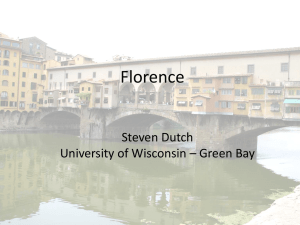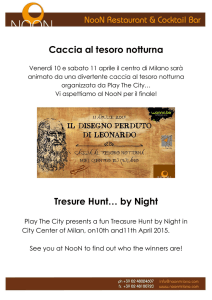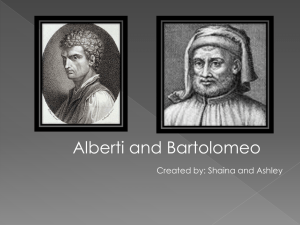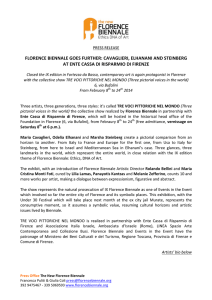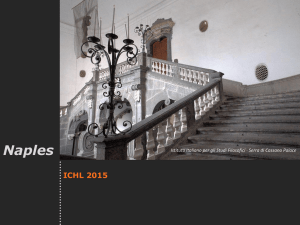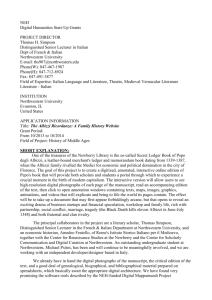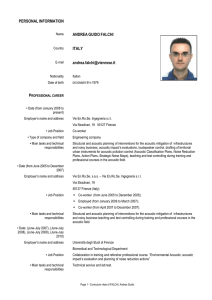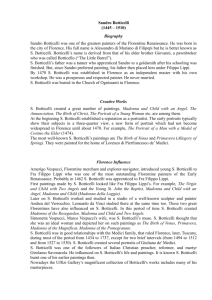Fresco Paintings
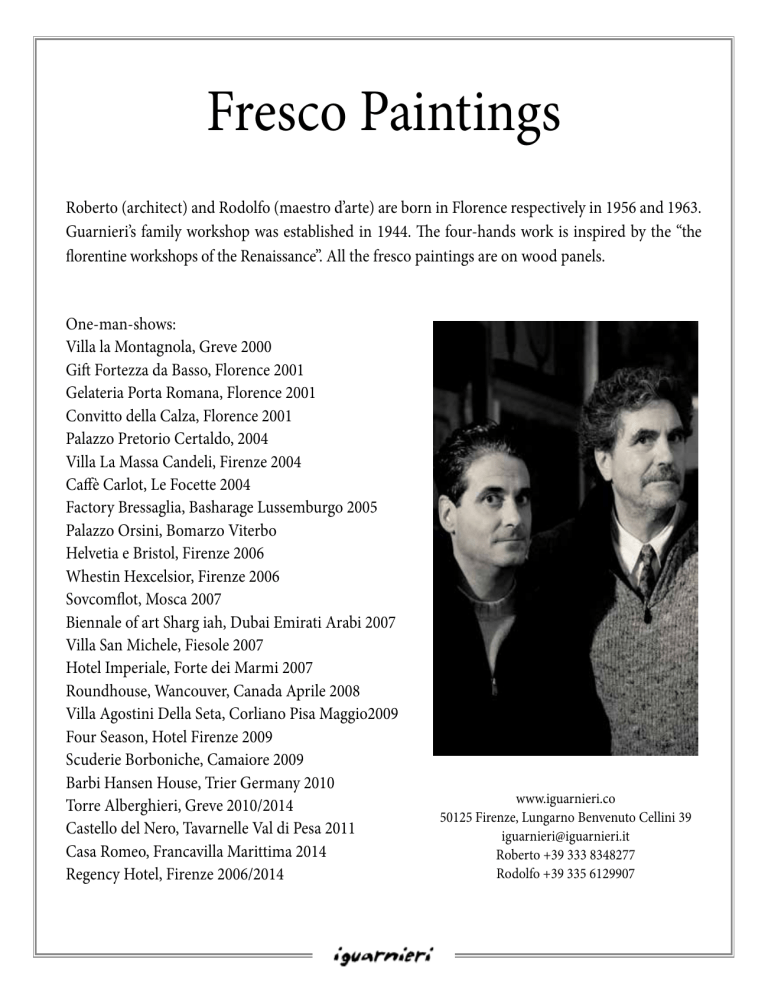
Fresco Paintings
Roberto (architect) and Rodolfo (maestro d’arte) are born in Florence respectively in 1956 and 1963.
Guarnieri’s family workshop was established in 1944. The four-hands work is inspired by the “the florentine workshops of the Renaissance”. All the fresco paintings are on wood panels.
One-man-shows:
Villa la Montagnola, Greve 2000
Gift Fortezza da Basso, Florence 2001
Gelateria Porta Romana, Florence 2001
Convitto della Calza, Florence 2001
Palazzo Pretorio Certaldo, 2004
Villa La Massa Candeli, Firenze 2004
Caffè Carlot, Le Focette 2004
Factory Bressaglia, Basharage Lussemburgo 2005
Palazzo Orsini, Bomarzo Viterbo
Helvetia e Bristol, Firenze 2006
Whestin Hexcelsior, Firenze 2006
Sovcomflot, Mosca 2007
Biennale of art Sharg iah, Dubai Emirati Arabi 2007
Villa San Michele, Fiesole 2007
Hotel Imperiale, Forte dei Marmi 2007
Roundhouse, Wancouver, Canada Aprile 2008
Villa Agostini Della Seta, Corliano Pisa Maggio2009
Four Season, Hotel Firenze 2009
Scuderie Borboniche, Camaiore 2009
Barbi Hansen House, Trier Germany 2010
Torre Alberghieri, Greve 2010/2014
Castello del Nero, Tavarnelle Val di Pesa 2011
Casa Romeo, Francavilla Marittima 2014
Regency Hotel, Firenze 2006/2014 www.iguarnieri.co
50125 Firenze, Lungarno Benvenuto Cellini 39 iguarnieri@iguarnieri.it
Roberto +39 333 8348277
Rodolfo +39 335 6129907
2
Our paintings are in private and public collections in Italy and all around the world:
Abu Dhabi City AE, Andover MA, Alpharetta GA, Asheville NC, Atherton CA , Atlanta GA,
Berkeley CA , Beverly Hills CA, Bonneuil FR, Boston MA, Boulogne FR, Bronxville NY, Bruxelles BE, Calabasas CA, Calgary CA, Cancun ME, Carmel CA, Chennai IN, Cincinnati OH,
Collonge-Belrive CH, Cologny CH, Colorado Springs CO, Cremorne AU, Doha QA, Edmont UK, El Paso TX, Les Suves FR, Euerberg DE, Freiburg DE, Fort Worth TX, Glen Iris AU,
Gloucestershire UK, Greenville SC, Greenwich UK, Guildford AU, Hallandale FL, Hamburg
DE, Hamilton CA, Heerlen NL, Hoboken NJ, Hong Kong HK, Houston TX, Irvine CA, Jarlasa
SE, Jersey City NJ, Kennenbunkport ME, Laguna Beach CA, Lake Ridge VA, Ljungsarp SE,
London UK, Los Angeles CA, Louisville KY, Malaga ES, Malibu CA, Mamaroneck NY, Melbourne AU, Metairie LA, Miami FL, Mill Valley CA, Milwaukee WI, Morgantown WV, Montreal CA, Moscow RU, Muenchen DE, Naples FL, Nashville TN, Needham MA, New Delhi
IN, New York NY, Newtown CT, North Venice FL, Oklahoma City OK, Paris FR, Pembroke
FL, Peoria IL, Phoenix AZ, Richmond VA, Salt Lake City UT, Saint Davis UK, San Francisco
CA, San Juan PR, SausalitoCA, St. Petersburg RU, Seattle WA, SidneyAU, Southport UK, St.
Maxime FR, Stafford UK, SterlingVA, Stockholm SW, Sugar Land TX, Tampa FL, Tel Aviv IL,
Tokio IP, Tomball TX, Toorak AU, Toronto CA, Trier DE, Tucson AZ, Vancouver CA, Victoria
AU, Warren MI, Washington DC, Winchester UK.
Bosco 2014, particolare cm 250 x 125
3
Città 2014 cm 125 x 250
4 5
Fiorellini I 2014 cm 84 x 184
7
Casetta con cipresso blu 2014 cm 48 x 38 Cipressi in rosso 2014 cm 50 x 60
Cipressi in blu 2014 cm 70 x 80
8
Cipressi foresta rosa 2014 cm 43 x 53
Paesaggio colorato 2014 cm 110x120
9
Fiorellini II 2014 cm 125 x 180
10
Papaveri 2014 cm 80 x 125
11
Fiori e alberi 2011 cm 125 x 220
12 13
Prato fiorito 2014 cm 125 x 250
Prato rosso 2014 cm 125 x 250
14
Papaveri grandi 2014 cm 125 x 250
Fiori 2014 cm 125 x 250
15
Girasole 2014 cm 125 x 250
16 17
Calice in giallo 2014 cm 125 x 125
18
Due calici grande 2014 cm 125 x 125
19
Tre rossi 2014 cm 125 x 125
Calici 2012 cm 187 x 184 Tre calici grande 2011 cm 101 x 101
Calice rosso 2013 cm 83 x 125
20
Tre bicchieri 2014 cm 70 x 80
Sei calici 2013 cm 80 x 140
21
Nudo in bianco 2013 cm 83 x 184
22 23
Ignudo 2013 cm 80 x 80
24
Altissima 2011 cm 65 x 213 Nudo d’oro 2010 cm 80 x 160
25
Nudo velato 2011 cm 35 x 50
26
Fanciulla rossa 2011 cm 90 x 90 La fanciulla blu 2012 cm 90 x 90
Italia 2012 cm 100 x 100
27 da Modì 2014 cm 71x80
Nudo nero 2010 cm 77 x 183
Nudo disteso blu 2012 cm 120 x 184
28
Nudo sul letto viola 2010 cm 84 x 124
Nudo sul letto blu 2014 cm 75 x 200
29
Settignano 2013 cm 84 x 184
30 31
Siena Buongoverno 2013 cm 80 x 140
Casa d’Autunno 2014 cm 40 x 50
32
Campagna grande 2014 cm 125 x 250
Oceano 2014 cm 125 x 250
33
Mare 2014 cm 125 x 250
34 35
Regata 1 2013 cm 79 x 90
Regata 2 2013 cm 70 x 90
Tre vele 2014 cm 70 x 140
Regata 3 2013 cm 80 x 90 Regata 4 2013 cm 70 x 70
36
Regata 2010 cm 30 x 42
37
Vela arancione 2010 cm 30 x 40
Vela gialla 2011 cm 38 x 41
38
Vela piccola 2011 cm 32 x 28
Forte di Marmi 2014 cm 80 x 125
40
Vista di Firenze 2013 cm 40 x 60 Casa nel bosco 2009 cm 100 x 200
41
David verde 2011 cm 85 x 65
42
Uffizi 2012 cm 90 x 150
43
Ponte vecchio rosa 2014 cm 53 x 37
44
Primavera bruna 2013 cm 90 x 140
45
Filippo e Arnolfo 2014 cm 80 x 200
46 47
San Miniato blue 2011 cm 25 x 20
Santa Croce arancio 2011 cm 30 x 40
San Miniato piccolo 2011 cm 23 x 18 Santa Croce blu 2011 cm 25 x 20
48
San Miniato 2011 cm 30 x 40
49
50
Cupola gialla 2010 cm 33 x 33
Santo Spirito 2011 cm 40 x 50
51
Battaglia 2014 cm 110 x 180
52 53
San Romano 2014 cm 84 x 184
54 55
Battaglia Paolo Uccello 2014 cm 80 x 140
Buongoverno campagna 2014 cm 84 x 184
56
Guidoriccio 2013 cm 60 x 80
57
Once upon a time there was a Prince.
However, we are not writing a fairytale here. This is, on the contrary, a semi-scientific account of a phenomenon that traversed Florentine art from the Middle Ages and throughout the Renaissance, giving birth to an outburst of creativity that for both quantity and quality has no equal in the world.
An experience which enlightened, contemporary painters such as Roberto and Rodolfo Guarnieri can bring back to life. And with horizons which stretch far further than the city of Florence itself.
You don’t have to go far to see them and to breathe the very atmosphere in which they were created.
Your author had merely had to look in at the Guarnieri workshop at Lungarno Cellini 39. But let’s go a step at a time.
The great artists of past centuries worked within a society in which the links, whether of content, form, religion or power, were greater by far than they are today. Yet they created deathless works without which the whole upheaval of the 19th century onwards, thanks – but not only – to revolution of Romanticism, would never have happened.
Let us call to mind that inspired 1974 monologue of Gaber-Lupoirini on “Giotto da Bondone”. In fact we’ll even read a fragment or two: “I am watching him drawing on rocks […]. And he thinks […] of the possibility of painting a sky different from the one so far depicted. Of renewing everything.
And as we all know these are things we can only do by using our logic and reason […]. As we know, in the pictures of those days the sky was always painted gold: fine gold, fixed and implacable! This didn’t seem right to Giotto, and here began his struggle. He studied the malleability of gold in order to modify it, to change it, then he attempted a sky… and it turned out all gold. He studied the chemistry, the possible stratifications… a slightly lighter shade, a slightly darker one, but it was always gold! He realized that chemistry was not the way to solve his problem […]. Then he cast a glance at the sky and exclaimed: “Why, to me it looks blue… Heavens alive, the sky is blue!”
It was a revolution. Like the one brought about by Galileo in 1632 with his “Dialogue Concerning the Two Chief World Systems”.
The Florentine painters of the Middle Ages and Renaissance (and beyond) thus acquired a technical, wide-ranging creative capacity without equal, and created the open-air museum which is the city of Florence. Paintings, frescoes, portraits, scenes of religious and civil life; palaces, churches, and the walls and houses of the city of the fleur-de-lys became immersed in beauty.
The prince (nobleman, cardinal, or prosperous merchant) commissioned works of art, paid for them and freed the artist from mundane worries. The artist cashed in, and paid him back by creating the masterpieces we know. A relationship which, in its different way, we find on this level perhaps only in the world of the cinema. Yet much of contemporary architecture and town planning would
58 benefit from a return to this salutary type of patronage. Glass and metals, marbles and King Kong size structures are not sufficient for human welfare, be it at the level of the family, the public building or the workplace.
Hence, to return to our opening statements, the artistic proposal put forward by Roberto and Rodolfo Guarnieri, two Florentine masters whose works are displayed or else created the world over.
We need only make an effort to look at them as if superimposing our eyes on theirs. Their eyes are such as scrutinize a kind of art that in Florence itself fails to move forward, eyes that receive the signals conveyed to them by the Earth, of new enlightened ‘princes’ who aspire to give the substance of beauty to the great open spaces of the architecture of the 20th century and the Third Millennium, perhaps by embodying some idea harboured in their personal empyrean in a fresco or cycle of frescoes which, by being represented, may seem endowed with eternity. Or nearly. The new dreams of a new era.
Yes, a tour of their workshop is quite enough to show you that Roberto and Rodolfo Guarnieri possess all the technical means, the artistic culture and the refined, comprehensive taste of the artists of the Middle Ages and the Renaissance; and that they have already how, combining their creativity with the fantasies and resources of some new patron, they can compensate for the architectonic nihilism that often rules the roost. And above all it will suffice to make you want to see more and know more about it.
Theirs is not a mere contract. It is also a contract, but of the sort which combines the forces of different minds and, in the bond designedly created by the pact between the new prince and the artist, bring about a new aesthetic culture of cities, public buildings, offices, museums, stadiums, hospitals, and all those places which people, entering them to work, to live, to receive treatment or to enjoy recreation, can breathe the air of their own humanity, or take in even a part of that of others, thanks to the work of the Guarnieri brothers. From their corner of Florence, this warm workshop full of colours, imagination, picture frames, smells and unconventional ways of viewing reality, we have looked over the threshold of a new humanism.
Enrico Zoi
59
Dagli Uffizi, particolare 2014 cm 60 x 80
60
